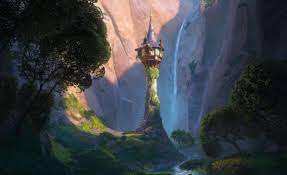Rapunzel Tower has been a symbol of strength, beauty, and magical wonder since it was first seen in the Brothers Grimm fairytale of the same name. While it may seem like a simple, whimsical tale from another age, Rapunzel Tower’s symbolism has endured throughout the centuries and taken on a myriad of interpretations, from a symbol of a woman in confinement to a representation of personal transformation and growth.
This blog post takes a closer look at the Rapunzel Tower, exploring its history and the stories that have shaped its meaning over time. We’ll also discuss why it’s still relevant in our modern world and how it can be used to inspire and empower. From its beginnings as a fairytale to its status as a powerful symbol today, Rapunzel Tower is a reminder that strength and beauty can come in unexpected forms.
1. History of the Rapunzel Tower
The Rapunzel Tower is one of the most iconic pieces of architecture in fairy tale history. The tower was first introduced in the Brothers Grimm version of the fairytale “Rapunzel”. The Rapunzel Tower was built by a sorcerer as a place to imprison his adopted daughter, Rapunzel. The tower was incredibly tall, with no door and only one window at the very top. Rapunzel was instructed by the sorcerer to never let anyone into the tower unless he said the same phrase. This phrase was the only way anyone could gain access to the tower, and it served as a way for the sorcerer to check on Rapunzel and make sure she was safe.
2. Location of the Rapunzel Tower
The Rapunzel Tower is located in a remote and unknown location, deep in the forest. It is surrounded by lush greenery and trees, making it both incredibly beautiful and incredibly difficult to find. The tower itself is immense, soaring up into the sky, with only a single window at the very top. It is a difficult climb for even the most experienced climbers. The tower is said to be home to the mysterious Rapunzel and her magical hair, which is said to have the power to grant wishes.

3. Description of the Tower
The tower, located deep in the forest, appears to be made of a pale, cream stone. It is composed of three stories, and the rooftop is topped with a pointed tower. The windows of the tower are small and round, and the door is arched and made of a thick, dark wood. The walls of the tower are decorated with ivy and other greenery, which gives it a whimsical, almost magical feel. The tower is situated in the middle of a clearing in the forest, surrounded by a few small trees, and is seemingly inaccessible from the outside.
4. Popularity of the Tower
The Tower is one of the most recognizable landmarks in all of fairy tales, and it has only grown in popularity over time. It’s featured in countless movies, books, and video games, often as the setting for a thrilling adventure. People often refer to it as the Tower of Rapunzel, due to its connection to the popular Brothers Grimm story of the same name. It’s a symbol of power, romance, and mystery, and its enduring appeal is what makes it so beloved by people of all ages.
5. Interesting facts about the Tower
Rapunzel Tower is one of the most iconic buildings in the world. Here are five interesting facts about this remarkable structure:
1. Rapunzel Tower is located in the Baden-Württemberg region of Bayern, Germany. It was built in the 13th century and is the tallest castle tower in Europe at a height of 184.5m.
2. It is believed that the tower was named after the Brothers Grimm fairytale of Rapunzel, as the two stories bear similarities.
3. The tower is a popular tourist destination, and it is estimated that more than 1 million visitors climb the tower’s 1,501 steps every year.
4. As well as being the tallest castle tower in Europe, it is also the second-tallest structure in the world, beaten only by the Tokyo Skytree.
5. The tower is illuminated at night, making it a beautiful sight to behold.
Conclusion
In conclusion, the Rapunzel Tower is an iconic symbol of the Brothers Grimm classic fairy tale and has been featured in countless adaptations and retellings. The tower itself is a simple structure, but its symbolism carries a powerful message of hope and freedom. Although the original version of the story has been around for centuries, modern versions have added a touch of whimsy and fantasy to the tale, making it a timeless classic.





